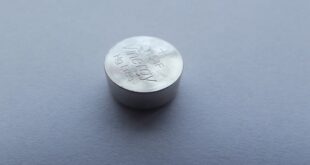I’ve collected 50p coins for quite some time and would love to know the value of what I have accumulated.
I’ve seen some coins like the ones I have listed on various sites for £30,000 and other high values.
Do I have some valuable 50p coins that could be worth £30,000? I do also have Kew Gardens 50p as part of my collection, although, it has currently going walkabout… Stacey, via email.
Coin crazy: Many of us hoover our unusual looking coins from our change – but by and large, most are worth face value
This is my third column and a great opportunity for us to get to know each other a little more.
When I was sifting through all the submissions for items to value, I knew this question would help me share a bit more about the man behind the money-making facts.
The most unsurprising fact is probably that I am a massive collector but more importantly, I am bonkers about the humble 50p.
I’ve collected every single one and I’m in good company as I know my gorgeous friend, and This Morning colleague, Josie Gibson, is also a massive fan.
Did you know, coins are the second most collected item in Britain? Beaten only by stamps.
And the 50p makes up the majority of coins collected. It is Britain’s most collected coin of all time.
This coin was first launched in 1969 and has acquired millions of fans. So much so that not a day goes by where I’m not asked to value one.
The reason for their popularity quite simply lies in the fact that their size and shape make them a perfect candidate to have different illustrations to commemorate key events and cultural figures on them.
The first such commemorative coin was introduced in 1973 to mark the UK’s entry into the European Economic Community and since then we have seen around 150 commemorative 50p coins released.
There are so many reasons that fuel our passion for these coins. As a person that wants to help the nation earn more money, I love the fact that something of monetary value can be worth even more than it should be – It’s like you’re getting one over on ‘the system’.
The beautifully curated designs are another key draw for many, and I particularly enjoy how some evoke that feeling of nostalgia, like the wonderful Paddington Bear collection.
With so many designed to commemorate cultural and political events in our history, it is no wonder everyone wants a piece of them.
I always try to distance myself from the emotive connection of an item when valuing it but these coins somehow bring down my barriers and I get sucked in like many others.
Maybe it’s the excitement of peering into my palm when someone hands me my change, hoping that I see a special 50p staring back up at me.
But are they worth the big money you often find people advertising them for?
Searching only this week, I found a Kew Garden 50p on sale for £127,000 and a lovely Beatrix Potter commemorative coin for £37,000.
The short answer is… no – and it is a warning over skimming resale websites for true value.
I wish we lived in a world where a visit to the corner shop could result in being handed a coin enabling you to retire early but the truth is, if you do happen upon one of these coins, it might stretch to a round down your local – that said, with the price of a current pint, maybe just go with one mate.
The key to value, is rarity. The lower amount of a specific coin produced the higher the value (in most circumstances).
As with nearly all collectables, condition is also king. Anyone like me, who loves to collect these coins will be happy to pay a premium for a shiny, well looked after coin – scratches and chips are not desirable.
With coins, there is also the difference between struck for circulation and struck for commemorative purposes – coins that aren’t meant for circulation are generally worth more, as they contain more precious metal.
But the appetite for collecting coins that have been in circulation is huge.
While none of the collectable 50ps are going to fund a life of luxury, there are many still worth much more than their street currency.

Most valuable ones come from the 2011 London Olympic collection and while many commemorative coins were produced prior to this historical event, the UK Olympic thrust 50p collections into the stratosphere.
But there is one non-Olympic coin that still retains the gold medal for value from the 50p collections circuit and whilst you can find some eye-watering price tags for these online, most are plucked out of thin air and have no resemblance to the true value.
At the time of printing, some of the most valuable 50p coins are:
1. 2009, Kew Garden coin: Only 210,000 in circulation. Worth £100-£150 (£200 – £400 if uncirculated).
2. 2011, Offside rule explained coin: 1,125,500 in circulation. Worth £15 – £30.
3. 2011, Olympic wrestling coin: 1,129,500 in circulation. Worth £10 – £30.
4. 2011, Olympic judo coin: 1, 161, 500 in circulation. Worth £10 – £30.
5. 2011, Olympic triathlon coin: 1,163,500 in circulation. Worth £10 – £30.
All these coins are ones you could very easily find in your change – although it has become harder over time as people became aware of their resale value – so be sure to keep an eye out for specially designed ones.
It is worth me saying, that some 50ps with errors can fetch a little more money.
There has been much speculation recently with regards to a Benjamin Bunny 50p with errors that some believe could be worth hundreds – in reality, it’s worth £25.
That said, a 2011 Olympic swimming coin with an error did sell for £2,500 once BUT coins such as these are generally valuable to a collector who will pay whatever they can to own it, rather than it being indicative of the true value.
Facts gathered and myths, busted… what are Stacey’s coins worth?
Firstly, I’d like to commend you on a lovely collection, from one enthusiast to another, I am very happy to value your 50ps and I am sure you have had a lot of fun collecting them.
If you would like to sell your collection, I strongly advise you avoid online auction sites – basically the wild west of selling. Instead, opt to join some coin collecting clubs on social media.
While you don’t have any with errors and many your coins are worth the face value – too many to mention in this column – you do have some worth more like your Battle of Hastings and Squirrel Nutkin coins, so I’ll concentrate on ones you have you could get more than face value for.
Your Flopsy Bunny coin would sell for £3-£6 and the Olympic coins in your collection would likely achieve £2-£4 each (as they are of the higher minted collection).
In total, I estimate that you could earn between £80-£100 for your 50p collection but this would only be achievable if you spent the time to sell the individually.
While this isn’t life changing, it is still a decent profit on your £55 investment, and this is without the Kew Gardens 50p coin you mentioned that you have but can’t currently locate.
As shown in my top five earlier, this could potentially increase your profits considerably, so I would dig behind your sofa, smash open your piggy bank and check all your pockets as this one will be worth double your entire collection.
If you would like to sell your collection, I strongly advise you avoid online auction sites – basically the wild west of selling. Instead, opt to join some coin collecting clubs on social media.
Here you are more likely to meet likeminded enthusiasts who firstly know a coin’s true value, but more importantly, are interested in collecting them and more likely to purchase from you.
To get an in-depth idea of the value of various coins, do your research on sites like Coin Hunter and download their eBook as a resource tool.

Going for gold: How much is my full sovereign now worth?
Has my full sovereign grown in value?
I have this full sovereign my father gave me many years ago. Around 25 years ago I got it valued at a jewellers.
They said it was worth around £45. To be honest I was tempted to sell but I didn’t.
I know gold has risen but has my coin risen much in value? Ray, via email.
Whilst we’re looking at coins, another reader, Ray from Rotherham, piqued my interest with their question about their sovereign, which is music to my pawnbrokers’ ears.
You last had your coin valued when I started my career, so this really resonated with me when I was reading through all the submissions.
Like 50 pence’s, I adore sovereigns. They were first introduced in 1489, then retired in 1603 when the Stuart’s came to power before being reintroduced in 1817.
For centuries people have collected sovereigns as a secure way of holding their money in gold form.
Often in times of economic uncertainty, people will buy these coins in the hope they can securely hold their value and increase in the future.
A full sovereign weighs 7.98 grams, measures 22.05mm across and has a gold purity of 91.6 per cent.
There are also half, quarter and even double sovereign’s but I am a purist, so much prefer the modern Sovereign coins, struck in 1817.
Since their inception very little has changed on their design apart from the switching of the St George motif on the reverse of the coin to the Royal Coat of Arms from time to time.
For historical geeks like me, you can guess the time-period a coin came from based on who adorned the other side of the coin because the monarch’s portrait is always present (for those less interested in challenging their royal history, there is also a date below this image).
So Ray, did you do well to hold on to your Sovereign? And has that £45 valuation from 25 years ago increased?
The answer is a resounding YES. I value this as a standard sovereign produced in 1978 and it’s the meteoric rise in gold prices that make this such a tantalizing item to value for you.
Since your last valuation, gold have increased in value ten-fold.
To put that into perspective, you could sell your sovereign today for £435.
The great thing about sovereign coins is that if you do want to add it to your collection, they are VAT free plus, if you ever wanted to sell it, they are capital gains tax free.
I’m not a financial advisor so always get regulated advice, but you did very well not to sell this coin all those years ago.
Some links in this article may be affiliate links. If you click on them we may earn a small commission. That helps us fund This Is Money, and keep it free to use. We do not write articles to promote products. We do not allow any commercial relationship to affect our editorial independence.
Source link



